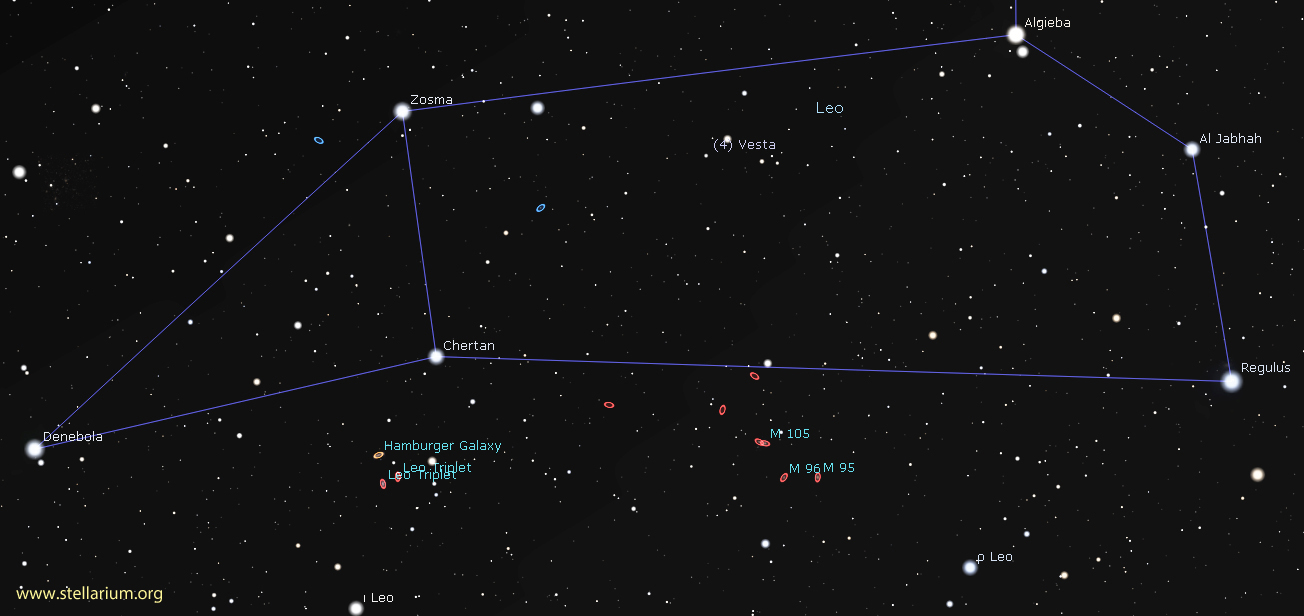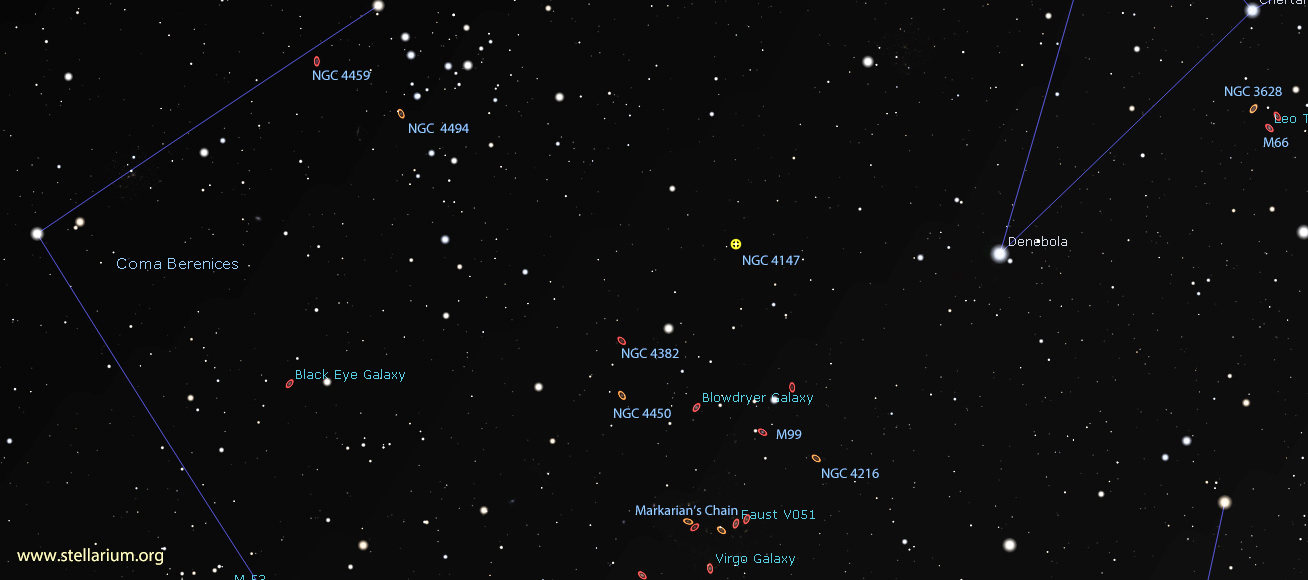Distant Islands
Longer days and shorter nights are telltale signs winter are all but gone. As Orion and Taurus are sinking in the west, disappearing by midnight, we now focus on the abundance of galaxies available. We can observe and photograph a few classic groupings in Leo the Lion such as the Leo Triplet consisting of M65/M66/NGC 3628 or the combination of M95/M96/M105. This pales in comparison to the swarm of galaxies found from Virgo through Coma Berenices and up into Ursa Major.

An observing challenge would to locate the dwarf spheroidal galaxy Leo 1. It is estimated to be 820,000 light-years away with a diameter of around 2,000 light-years across. As irregulars go, it has no structure whatsoever and glows at eleventh magnitude. One problem spotting this smudge in the eyepiece of a telescope is the galaxy’s proximity of a mere 20 arcseconds from the bright star Regulus, blazing at magnitude 1.4. Putting this bright sun out of the field of view is key to viewing Leo 1.

Galaxies are distant islands containing hundreds of millions of stars just like our Milky Way. A great object to observe and image is M64 - the Blackeye Galaxy. Catalogued as a type 2 Seyfert Galaxy, this spiral resides only 17 million light-years from us and has a distinctive thick band of dust hiding part of the bright nucleus thus giving the galaxy its name. This object should be on your observing list.
With this vast region populated with so many galaxies, groupings are very common. With a wide-angle eyepiece, locate the duo of M84/86 measuring 66 and 57 million light-years respectively and you should see about half a dozen fainter objects closeby These members are part of “Markarian’s Chain”. Wide-angle photography will allow you to catch extended portions of the chain. More than 15 galaxies are associated with this amazing collection.
As for the planets, Mars has now dimmed to magnitude +1.3 and sets after 1 a.m. at the beginning of the month. The moon will appear below it on the 16th. Jupiter and Saturn are now emerging out of the solar glare and visible low in the southeast before 5 a.m. A digital moment of these two gas giants and the 20% waning moon occurs on April 7 as dawn is just about to start.
April 22 is the peak night of the annual Lyrid meteor shower. The Leonids produce about 20 meteors per hour but you will be battling a 70% lit moon that only sets after 4 a.m. This month’s new moon occurs on April 11 (lunation 1216) with the Full Pink Full lighting up the sky on the 26th.
Until next month, clear skies everyone.
